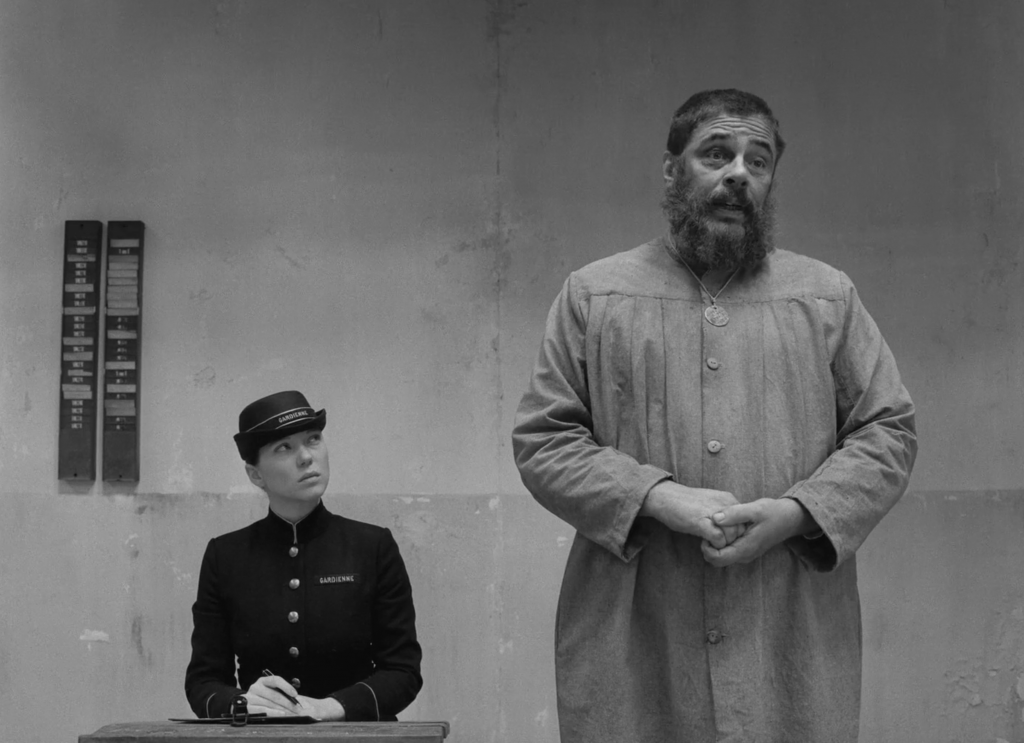The Charming, Cross-Cultural Urban Space of The French Dispatch
We just watched Wes Anderson’s newest film, The French Dispatch of the Liberty, Kansas Evening Sun, or, just The French Dispatch (2021– I’m a little behind the times, leave me alone), and I was thinking about the cinematic imagination of urban space that crosses boundaries that would be challenging, if not impossible, to bridge in real life. These involve the seamless crossing of cultural boundaries (bilingual communication), characteristic hijinks, and, of course, a common aesthetic obsessed with theatrically-constructed, orthogonal mise-en-scène.
Wes Anderson is, of course, known for a particular, unmistakable style that is unapologetically dramatic in the classical sense– his films are visually more akin to stage productions than to the typical film, owing to techniques like the use of “flat” camera space (in which the camera observes a relatively two-dimensional scene instead of moving through it, or moves in a linear fashion through an environment, and the characteristically dry humor among characters engaged in absurd, often charmingly tawdry affairs. I’ve likened his work to Jean-Pierre Jeunet (City of Lost Children, or, famously, Amelie) owing to the positively theatrical style of drama (to contrast with, say, the average American cinematic style of Things That Blow Up Frequently And Quickly And Characters That Fail The Bechdel Test.


Wes Anderson’s portrayal of postwar France combines historically believable decor, immaculate details, and the periodic injection of his own characteristic style of absurdity in names like the Tobacco Newspaper Café or the Printers’ Café. This plus the Heidelberg beer brand– no doubt a wry reference to the printing press of the same name. The town in which the French Dispatch is based is called Ennui-sur-Blasé (bored-on-jaded).


The film is broken down into separate vignettes narrating related but separate articles published by the fictional newspaper featured in the film, which is a well-establish publishing outpost of a newspaper in small-town Kansas. While the absurdity of this construction is fun to imagine, it also nostalgically refers back to a time when most newspapers– including smaller ones- did indeed have foreign correspondents. Newspapers used to rely on foreign correspondents who would write in with topical information, but with teh advent of technology like telegraphy, the telephone, and radio, it was much easier to convey information back home quickly. Major newspapers in the United States at some point all had foreign correspondents, although smaller newspapers would also rely heavily on wire services that could more efficiently aggregate local (foreign) news to send across the pond for printing. Anderson’s style relies heavily on nostalgia in portayals of various Americas of old– think Moonrise Kingdom, which looks similarly at the 1950s era (with a Hank Williams soundtrack).

But the fun part is that in addition to the meticulously constructed scenery, the film is acted in both French and English, with the characters assuming a sort of Star Trekkian universal translator that allows seamless cross-cultural integration. This is an act of what I’d call characteristically charming absurdity that defines the film as well as Anderson’s quirky style. We’re similarly allowed glimpses of stage-like settings that transform based on the needs of the scene, as they might in a theatrical production– see above, the two characters in 1960s Paris discussing over the Jukebox (at some point the walls disappear completely), or, above right, a portrayal of the past (black and white) compared to the neon midcentury future.

I’m always thinking about ways to facilitate cross-cultural exchange in the built environment, so, while this perhaps wasn’t Anderson’s objective, it comes across through delightful narrative, acting by a stellar cast that feels like they’re genuinely enjoying the film as we watch it, and an assortment of gorgeous period sets and outfits. (⭑⭑⭑⭑⭑)
The French Dispatch was produced by Indian Paintbrush and American Empirical Pictures, and was distributed by Searchlight Pictures. All rights reserved, and I don’t own the rights to these images. Please don’t sue me.



